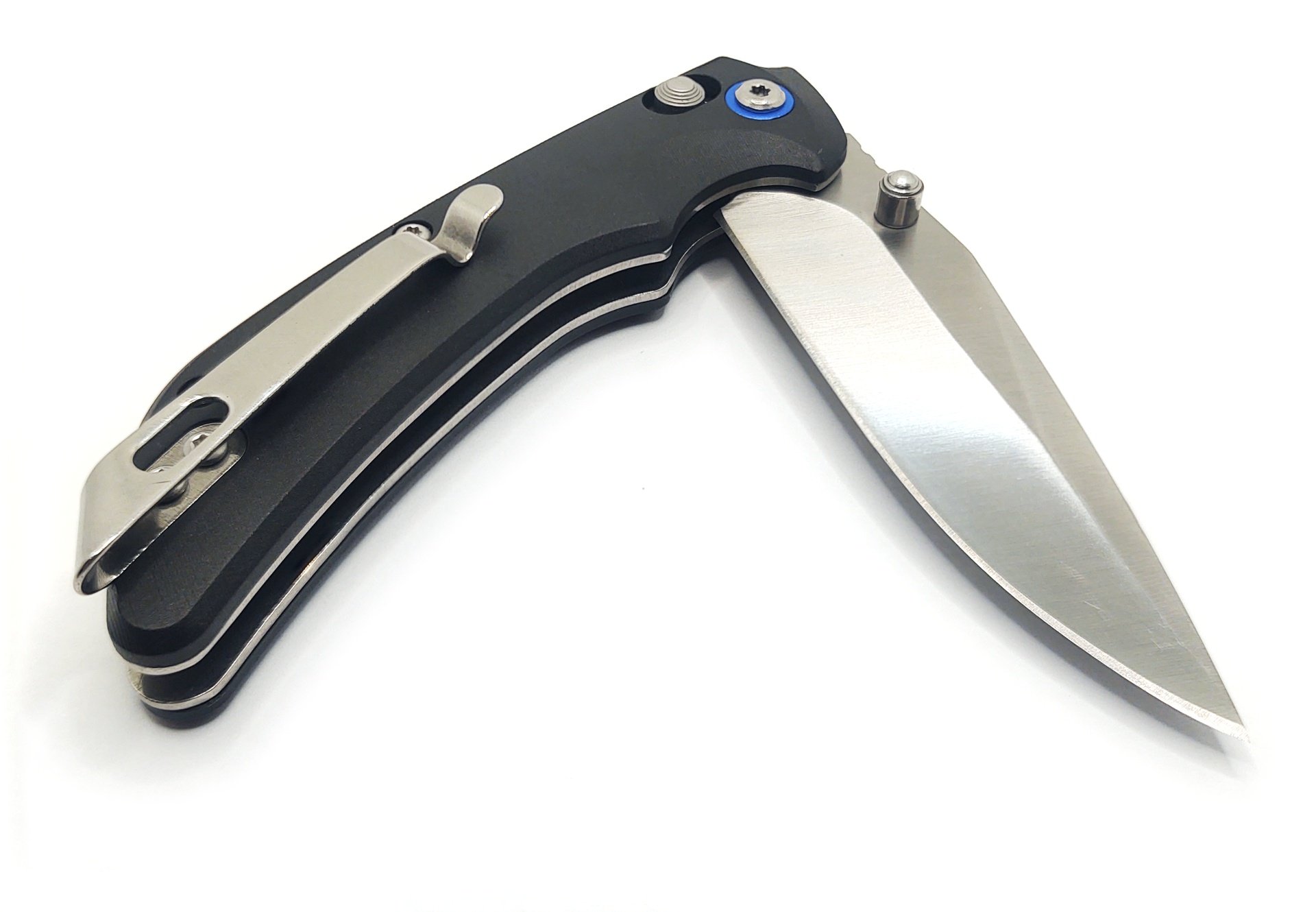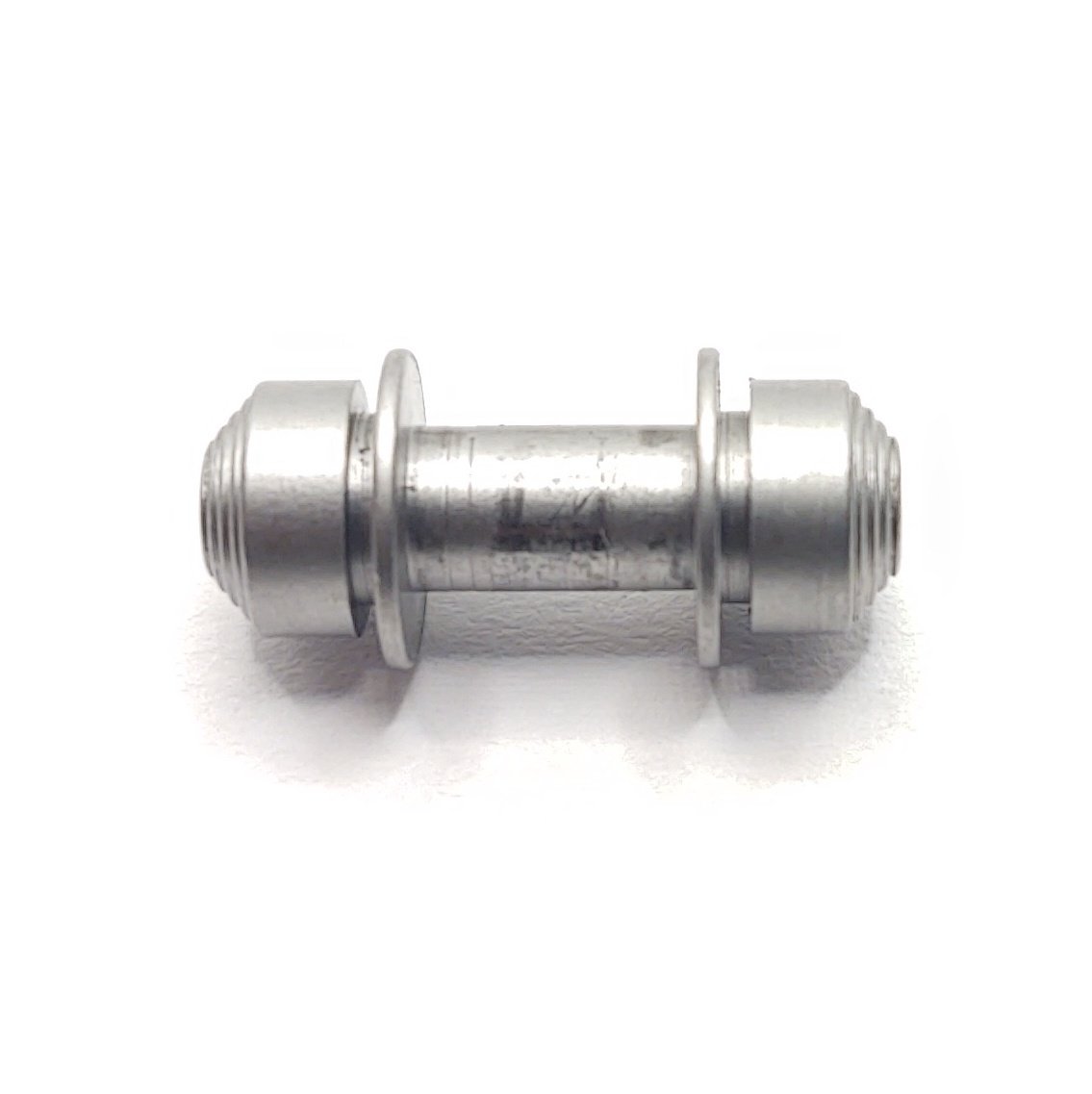That’s right, today is a treat especial for anyone who is of a very, very specific bent. You know who you are.
Here’s a bit of white whale. Or maybe not a whale. More of a white gopher? These cheap crossbar/Axis lock knockoff folders from Walmart have become strangely sought after lately. Possibly that’s just down to their memeworthiness, or maybe it’s the novelty factor.

Because of that they’ve actually been rather difficult to find. I’m sure that’s a combination of Walmart not actually distributing all that many of them for whatever reason (see the Braille skateboard fiasco, for instance, to see just how inept Walmart’s merchandising and logistics can be), plus now that the cat is out of the bag I’m sure various punters are buying them up in the hopes they can be scalped later at a profit.
But here one is, and both sides of its packaging:


The other day I rolled a natural 20 and found one of these while I was pawing through a random Walmart’s camping section several towns over from mine. Just one. And I checked their web site, which claimed that they didn’t have any.
There doesn’t seem to be any name or formal designation for these other than the SKU, “6835” for this variant, although there are (were) to my knowledge three different types of these.
So what is this and who cares? Well, @cetan already did two good posts on these previously, both the current and previous incarnations. TL;DR: This is a an “Axis lock” style folder that Wally World now sells for $5. If you can find it. Good luck with that.
That’s cheaper than most of the cheapest Chinese knockoff crap you could order from Wish, Temu, or Dealexteme. That’s cheaper than any flea market trash, any gas station knife, any bladed crud you might find in the glass case at your favorite bong shop. And frankly, I think it’s an astonishing result of massive economies of scale that you can get anything at all for that little money these days.
But is it any good?
Well, you know how it works around here. I’m going to talk about that. A lot.

The 6835 is an otherwise unassuming folder that’s 7-1/8" long open, 4-1/8" long closed, and knowing those numbers you won’t be surprised to learn that its drop point blade is precisely 3" long measured from the tip to the forward edge of the handle. There is even a real choil at the base of the blade, and the grind goes all the way down to it. Talk about luxury! It’s pretty light at 74.8 grams (2.64 ounces). The blade is 0.110" thick at the spine which is not hugely stout, and is made of… uh… Well, no one seems to know.
The thing is, the blade steel isn’t specified. Anywhere. Not on the package, not on the knife itself, and certainly not on the Walmart.com product description (which has since been pulled anyway). The package goes out of its way to specify that the handle scales are made of polypropylene, which is very strange, but doesn’t say anything about the blade other than “stainless steel.”
If I absolutely had to guess I would say it’s one of the cheaper Chinese alloys, 3cr or maybe 7cr if we’re lucky, 420C, or maybe at the very outside a lower grade 440. But I’m not holding my breath for that last one.

The 6835 has dual thumb studs for opening and sports a non-reversible deep carry (!) chromed clip. The clip’s actually not so bad, but its mounting screw heads are not flush and if you wear thick pants (jeans) they may snag on the seam a little.

Screw heads standing proud is actually kind of a theme, here. The pivot screw heads on both sides also stick out on both sides, roughly the same amount as the toggles for the lock.

Ah, yes. The lock. This knife, for $5, sports an honest to goodness Benchmade “Axis” style crossbar lock. A few years ago this would be unfathomable, not least because Benchmade held the patent on this until it expired in 2016. Now, it seems, anyone can have a shake. And I do mean anyone.
“Anyone” also apparently means no one. In this case, anyhow. There is no indication whatsoever on the knife’s packaging or anywhere else as to who actually manufactures this thing. There’s only “Distributed by Walmart Inc.,” and “MADE IN CHINA.” No points for guessing the latter. Ozark Trail is Walmart’s private label, and historically most of the those knives have been manufactured by Hangzhou Great Star Tools Co. Ltd., who are a Chinese OEM who also manufacture Sheffield and Swiss Tech knives, among a myriad of other things. That is probably the case here as well, but thus far impossible to prove.
But cheap as it is, it works. Now, out of the box mine would not do the “Axis flick,” where you can hold the lock back and swing the blade out without touching it. But it didn’t take much tuning to get this happening (more about that below, of course).
Though there is one itsy bitsy, teensy weensy, tiny little comment I have to make there…

The lockup is very solid and actually surprisingly precise. But there’s a square point on the heel of the blade left behind where the pocket is machined for the crossbar to rest with the knife in its closed position. And it’s got a burr on it that knocks against the crossbar ever so slightly even when it’s fully held back, which is a detectable tactile notchiness if you open the knife that way. I cured this by giving that corner about four strokes on a diamond sharpening stone while I had the knife apart.
There are a few other foibles that indicate that this is a cheap knife that’s probably not assembled with much care. For instance:

The polypropylene (apparently) scales look like aluminum at first blush, but they’re not. They have a subtle machined texture in them. But my knife, which I’ll point out was completely unused and it went straight from the package to photography, had these visible rub marks in the scales on one side. The packaging does leave part of the handle exposed and that’s probably to save a penny on plastic. That might have something to do with it.

The blade grind is not bad, but certainly not spectacular and no one will mistake this knife for premium. As is perhaps contractually obligated on cheap Chinese knives there are rather pronounced machine marks on the bevel, and no time or care has been spent polishing or stonewashing or even painting the blade. But on my example there is also some marring evident towards the point. This doesn’t affect anything. But it says “cheap, cheap, cheap” like a basket full of newly hatched chicks, loud and clear. It was usably sharp from the factory but only just.

While we’re at it, here’s the trueness. It’s not perfect, but I’ve seen worse – and I’ve certainly seen worse that cost a lot more. One side is definitely slightly visibly steeper than the other, though, and that’ll have to be ground out if you ever want to do a proper sharpening on this.
With exactly a 3" blade length the 6835 is precisely at the gold standard legal carry length limit for most places. Here it is compared to a couple of knives which at their combined MSRP would buy you just under 49 of these:

The 6835 is a shade smaller than the usual benchmark Kershaw/Emerson CQC-6K, but while we’re talking benches is about the same footprint as a Benchmade Bugout 535. Except…

With full scale-on-liner construction the 6835 is significantly thicker than the Bugout. Which makes sense, because being thin is kind of the Bugout’s entire deal. Regardless of that, svelte is not what this Ozark is, at 0.528" thick across the scales, not including the pivot screw heads (0.647") or the clip (0.702"!).

For a $5 knife, the 6835’s feel is… mixed, but not as terrible as you would expect. Despite the lined texture in the scales I find it to be a little bit slippery. There is a big positive index finger cutout in it, though, and some pretty squared off jimping on the back of the blade forward of the pivot. Once tuned the opening action can be nice, although out of the box (or rather, off of the hang card) mine was pretty dire. One thing I can say, if I’m allowed to get to these points out of order, is that once I got the pivot cleaned up, properly lubricated, and the screw tension tuned such that the blade could be flicked open there is a small but noticeable amount of up-and-down play in the blade once locked open. It’s not a lot, and it’s miles better than a flea market knife from yesteryear, but it is there.
Right. Smash.

This is what you get inside. Before we dig too far into detail, here is a different detail.

Dismantled, but with the crossbar lock in place, here’s what that looks like. It follows the typical dual hair spring design; there is one of these on both sides.

The crossbar is a single piece and does not unscrew in the middle like some. It is captive with its springs in place, but can be removed from the liners after complete disassembly via the cutouts in the liners you see above.
The halves are spaced with two shouldered barrel pins that are threaded in both ends. The blade endstop is a simple crosspin that is not shouldered and can fall out of either side with the scales removed. A pair of T6 head screws hold both the liners and scales by going into the spacers. I found all of the screws with a smear of colorless Chinese threadlocker (or perhaps just glue) on them, but they were all torqued inconsistently. Some came out nearly of their own accord, and one took a worrying twist to make let go. The pivot is a T8 head and you will probably need two drivers to bust it loose because it is a plain round Chicago screw pair with no indexing or D flat or anything. So it’s prone to just spin rather than unscrew if you don’t have a way to grab both sides at once.
All of scale screws are the same including the rearward one that goes through the clip, but the clip has a smaller secondary screw that drives into a hole in the liner as well. It’s shorter and a narrower diameter.
The blue accent details around the pivot appear to be anodized aluminum and are just friction fit, held down by the pivot screws. Be careful; they’ll remain resolutely in place until you’re not paying attention, then leap out and roll away.
The blade rides on white PFTE washers but the effect of this is rather diminished because the insides of my knife were slathered in some kind of unctuous, sticky crud that if I didn’t know better I would describe as like Cosmoline. I’m sure this is to prevent corrosion during the long boat ride from China, but it’s got the opposite effect of a lubricant and it made the pivot draggy and sticky. Even moreso than the situation the too-tight screw tension would create. Cleaning all that crap off with naptha and greasing the action up with silicone oil improved things significantly.

About this much, in fact.
The Inevitable Conclusion
There are definitely worse spends of your money than one of these. I have to say, I’m surprised – but not too surprised – about the level of superficial quality in one of these. It didn’t come out of the box quite right, and although making it right wasn’t hard it’d take some foreknowledge of what you were doing.
For the price, this knife is phenomenal. Not in an objective sense, mind you, but nor is it actually bad. A decade ago, though, $5 would buy you a piece of unusable trash. You know the type: One of those “Eagle” flea-market-card-table knives, or one of those horrible things they used to sell in lots of 100 pieces on QVC. Rattly, bendy, plasticky, with handles and blades snapping near instantly, and a barely functional lock if it has one at all. This knife is somehow none of those things which is noteworthy in and of itself.
What we don’t know, and what only time can tell, is how well it holds up. Especially the edge. We spend a lot of money on fancy supersteels to have a knife that’ll take a keen edge and keep it. A fancy supersteel is exactly what I guarantee you this knife hasn’t got. So the next task will be to put on the whetstone and see if it can keep from having to come back for more than ten consecutive minutes after some real world use.
So stay tuned.


"Ozark Trail the flamethrower! The kids love this one. "